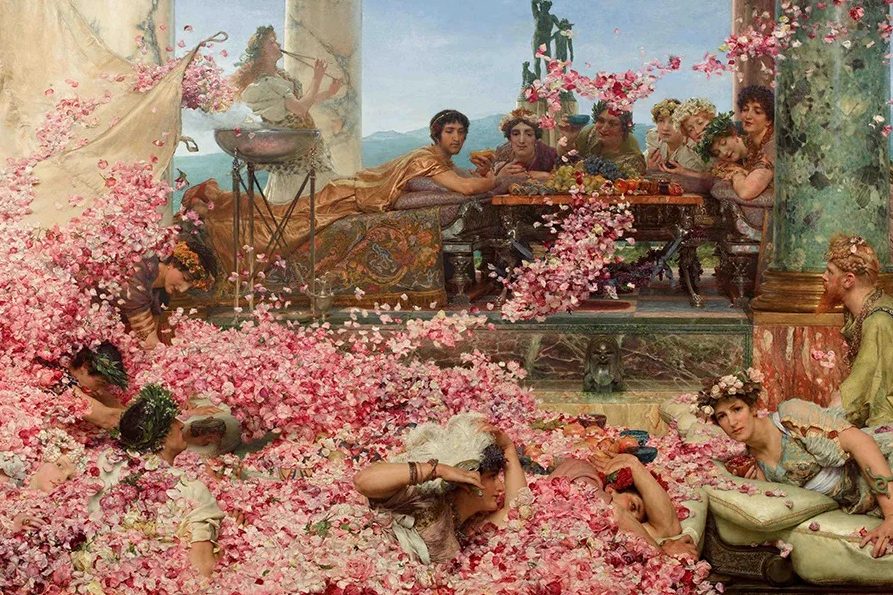Emperor of Rome? Is there a typo in the title? Mary Beard’s latest book is about not one but thirty Roman emperors, from Julius Caesar (assassinated 44 BCE) to Alexander Severus (assassinated 235 CE), so why the singular? The answer is that Emperor of Rome is a study of autocracy and one autocrat, as Marcus Aurelius put it, is much the same as another: “Same play, different cast.”
Beard’s subject is emperors as a category, because it was the symbol of rule rather than the ruler himself that mattered to the fifty million imperial subjects between darkest Britannia and the Saharan desert in the first three centuries of the Christian era. Added to which, she points out, most of the population outside the metropolitan elite could put neither a name nor a face to the current ruler, a man simply known as “the Emperor of Rome.” “There are people among us who assume that Agamemnon is still king,” said a 5th-century philosopher, reporting from North Africa. So don’t worry, Beard reassures her readers, if you can’t tell your Marcus Aureliuses from your Antoninus Piuses because no one else could either.
Domitian’s guests arrived to a dining room painted black, their places marked by imitation tombstones
Rome played to the public ignorance by literally blurring the emperors into one. Every time an emperor died, the features on his marble portrait were chiseled to resemble those of his successor, suggesting the seamless continuity of power. There is not a single image, Beard says, on coins, cameos, statues or sculptures, that looks remotely like any of the descriptions of the emperors given in the biographies by Suetonius. Not only would we never know from Domitian’s abundant head of hair that he was going bald (he even wrote a book on hair loss), but every imperial head was given by artists the same number of locks. The ancient historians, telling the same stories about different emperors, made them equally indistinguishable. The result was a period of such political stability that, as Beard puts it: “You could have gone to sleep in 1 BCE and woken up 200 years later and still have recognized the world around you.”
The aim of the book is to expose what Beard calls “emperors of the imagination,” and explore the reality, and banality, of imperial life. Digging beneath the mythical portraits of rulers seen as either “good,” like Trajan (“good in whose opinion?”), or “bad,” like Nero (“bad by what criteria?”), Beard asks startlingly simple questions: “How, and why, have we come to characterize the emperors as we do?” How was it possible to rule a vast empire with a skeleton staff? Why were so many emperors murdered? What were the rules, if any, of succession? Her interest is primarily in facts, but spin doctors — the invention of Roman government — offered important alternative facts, while fictions, in the form of gossip, slander, urban myths, even dreams, also have a part to play in Beard’s account, suggesting how the population imagined absolute and unending power to work.
So what were the emperor’s job requirements? Augustus, the founder of the Roman Empire — who died of natural causes in 14 CE (unless, as was rumored, he was poisoned by Livia) — left a useful roll call of his achievements in a manifesto which he had posted on the pillars outside his tomb. His boasting — “I did this… I did that…” — reminds me of God in the Book of Job, but Beard, always alert to the contemporary analogy, compares Augustus’s list of newly built shrines, porticoes, theaters, piazzas and temples to a “Make Rome Great Again” campaign.
How should an emperor live? We must see him, Beard stresses, in his habitat. She reconstructs the royal residence on Palatine Hill, taking us through its evolution from a compound of individual houses and dark alleys (in one of which Caligula was killed), to Nero’s Golden House, with its lake the size of the sea (it was probably, Beard suggests, a rectangular pool in a stone basin), to the Palace of Domitian, described by Roman writers as a greater wonder than the pyramids.
There is no better place to observe power than the dinner table, and no better place than imperial feasts for myths and legends to take seed. Emperor of Rome begins with the dinner parties hosted by the young Elagabalus (assassinated 222 CE), who reportedly sat his guests on whoopee cushions, served them green food, blue food, fake food or camels’ heels before smothering them in a deluge of flower petals. Really? Even Elagabalus’s Roman biographer, the source of the intel on his party tricks and lifestyle, conceded that most of the stories he gathered about the emperor (such as decorating his summer gardens with ice and snow) were probably concocted by the boy’s rivals and successor.
A chapter devoted to the semiology and sociology of Roman dining opens with an evening in the company of Domitian, whose guests arrived to find a dining room painted black, their places marked by imitation tombstones. The food, served on black dishes, was the kind offered to the dead. This party, reported in detail by the historian Cassius Dio, could be seen, Beard suggests, as a dictator’s flamboyant threat, or, less dramatically, as a stylish and witty fancy dress party, or simply as a philosophical reflection on mortality. It was important, as Seneca stressed in one of his essays, to prepare oneself for death.
And what about those lavish Roman menus? Elagabalus’s color-coded food, Beard points out, could be interpreted either as deranged self-indulgence or refined haute cuisine. The signature dish of Vitellius was reported to be peacock brains and flamingo tongues, but it is more likely that the royal kitchens served the kind of dishes which could be easily consumed with one hand while reclining on couches. The Roman banquet, Beard suggests, would consist of something closer to tapas.
Emperor of Rome is the work of a lifetime, and a book to return to. Immersive, witty, alive on every page, it clarifies the past and illuminates the present. What can we learn from the emperors about autocracy? “That it is fundamentally a fake, a sham, a distorting mirror.”
This article was originally published in The Spectator’s UK magazine. Subscribe to the World edition here.


























Leave a Reply